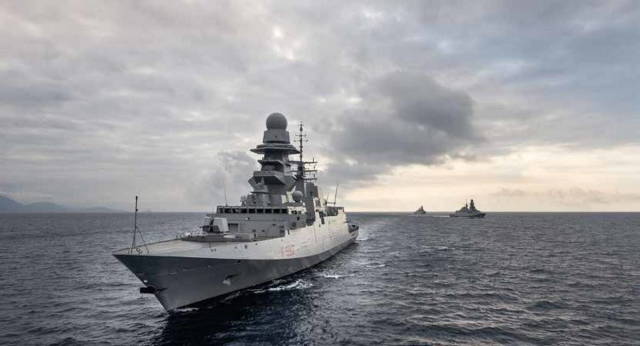As part of the development of a 30-year fleet construction plan (2020-2049), the US Navy is betting on new frigates and ships of the LCS class. It is assumed that together they will form a category of small Surface Combatants (SSC), which will not only expand the geographical presence of the fleet, but also increase its ability to operate in a geographically spacious operational area and overload the enemy's defenses.
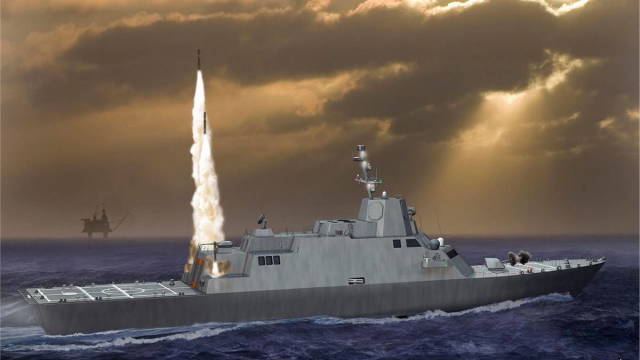
Small surface warship. Sketch.
Competition of new frigates
The US Navy is reportedly planning to purchase a total of 20 new URO frigates. Prior to the final decision on the name of the future class, the procurement program was launched under the designation FFG (X). The final tender for the design and preparation of the order was held on June 20, 2019. The sellers had until August 22 to submit their design proposals. The deadline for applicants to assess their costs is until September 26.
The US Navy proceeds from the purchase costs from $ 800 to $ 950 million per ship (the state of purchasing power for 2018). The lower figure is considered the goal, the upper one is the most acceptable price. The cost of the entire class is estimated at $1.281 billion.
The decision on the purchase was planned to be made in February 2020 after studying the submitted projects. The delivery of the order to the sole winner is scheduled for July 2020. According to the plan, the laying of the lead ship of the class will take place in 2020 – in the future, in the period 2021-29, two new frigates annually. The twentieth and last frigate is to be purchased in 2030. Delivery of the lead ship is expected in July 2026.
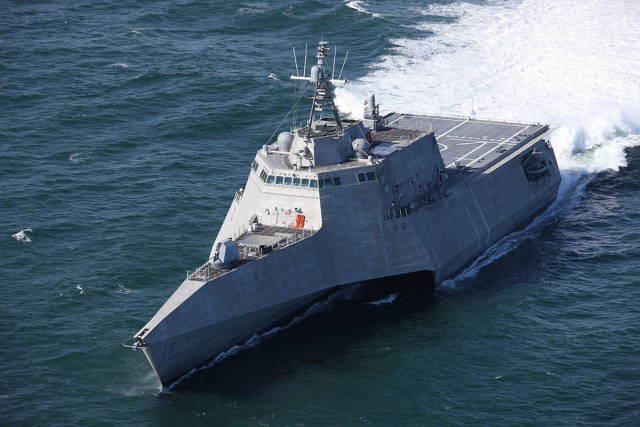
The ship of the coastal zone Independence project
According to experts, this tight schedule will be fulfilled only if the models for the new frigates are projects of ships already ready for construction or ships that are already under construction. The program also does not provide for special development of new technologies: all components and onboard systems either already exist or are currently being developed for use on ships of other classes.
In total, four shipbuilding consortia submitted applications to participate in the tender in June 2019. The fifth supplier, Lockheed Martin, initially wanted to present a project based on the Freedom type, but in May left the competition on its own initiative.
The remaining applicants submitted foreign warships as a basic design for FFG(X):
- Austal USA offers a revised version of the Independence project;
- Fincantieri and Marinette Marine (F/MM) enter the race with the Italian frigate "Fremm" (Fremm);
- General Dynamics (GD) and Bath Iron Works (BIW) offer the Spanish F100 "Alvaro do Bazan" (Alvaro de Bazan);
- Huntington Ingalls Industries (HII) does not publicly disclose any details regarding its version of the new frigate. At the same time, back in 2019, the company announced a paramilitary version of the largest class of Coast Guard ships in the United States, the Legend, also known as the National Security Cutter.
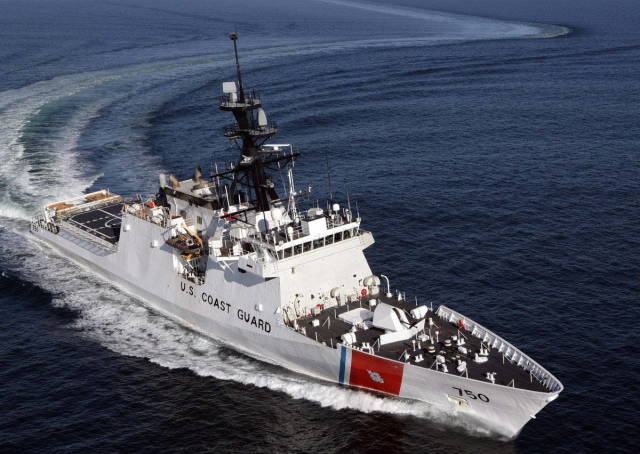
Legend Class Coast Guard Ship
The new frigate is a multi–purpose warship
The US Navy is considering the FFG(X) project as a multi-purpose warship. It can be used on the high seas and in coastal waters, independently or as part of a compound. The range of tasks to be solved includes air and missile defense (Anti-Air Warfare, AAW), the fight against surface targets (Surface Warfare, SuW), submarines (Anti-Submarine Warfare, ASW), as well as conducting combat operations in the electromagnetic spectrum (Electro-Magnetic Warfare, EMW).
In January 2020, the US Navy presented the planned equipment of new frigates:
Air Defense and Missile Defense (AAW)
- AN/SPY-6 EASR radar with active electronic beam rotation;
- integrated into the body of 32 Mk41 mine-type PU for launching SM-2 Block IIIC and ESSM Block 2 interceptor missiles;
- Mk49 installation with 21 RIM-116 RAM interceptor missiles;
- The IFF UPX-21 system for classifying air targets according to the "friend-foe" category.
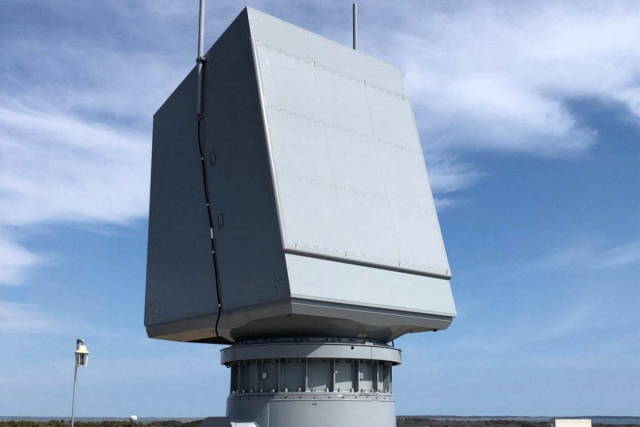
AN/SPY-6 EASR radar with active electronic beam rotation
Suitability of the new frigate for integration into the combat information system of the compound (Cooperative Engagement Capability System (CEC), which provides data exchange between ships and coordination of joint destruction of targets.
Air defense (ABM) capabilities will include not only the airspace above the ship, but also a wider area. The FFG(X) project can be integrated into the air defense of the operational group of ships. Nevertheless, the range of the new frigate's air defense capabilities will be less than the corresponding parameters of larger warships.
Fighting surface targets (SuW)
- 57 mm deck gun;
- PU (2×4 or 2×8) long-range anti-ship missiles (presumably Kongsberg Naval Strike Missile);
- electro-optical target detection system Eoss Mk20;
- electro-optical sensor for monitoring surface targets "Stalker" (Stalker);
- NGSSR long-range maritime area monitoring radar.
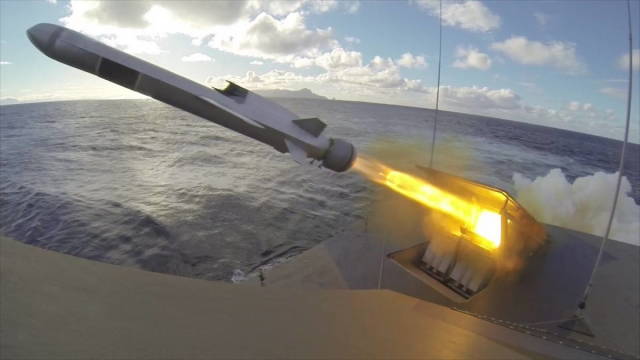
Launch of the Naval Strike Missile anti-ship missile
Anti-Submarine Warfare (ASW)
- integrated into the case of GAS AN/SQS-62;
- towed sonar TB-37;
- ASW control system AN/SQQ-89;
- anti-torpedo protection system ADC;
- long-range anti-submarine weapons (such as ASROC) in vertical PU;
- deck guided torpedo tubes (for older ship designs).
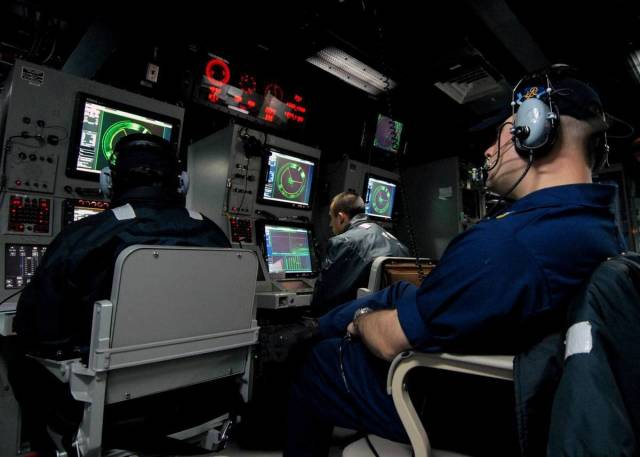
ASW combat posts of the AN/SQQ-89 control system
Means of Electromagnetic Warfare (EMW)
- SLQ32(V) 6 (SEWIP Block II) for electronic warfare (replacement with SLQ32 (V) 7 Block III Lite is planned later);
- equipment for the subsequent introduction of laser weapons with a capacity of 150 kW.
Initially, the new frigate will operate two rigid inflatable boats of the RHIB type with a length of seven meters. Later they will be replaced by two RHIB 11 m each . Manned MH-60R helicopters and MQ-8C UAVs are planned as airborne aviation assets.
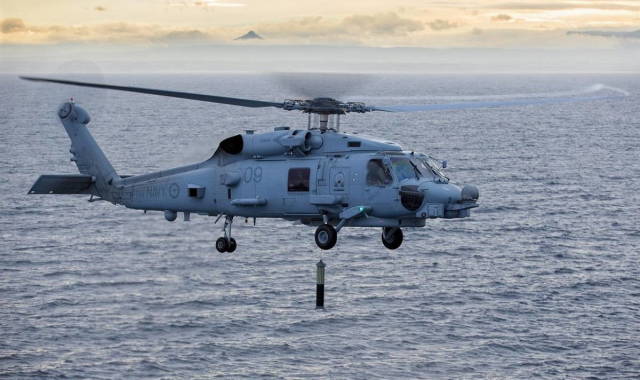
MH-60R Seahawk Helicopter
Probable prospects
A new combat information and control system (BIUS) for frigates is being developed by Lockheed Martin. The starting point is the COMBATSS BIOS, which is currently used on the LCS class ships of the Freedom project. The platform-independent system is easily modified with the help of new technology.
It is very likely that some details of the equipment of the new frigates may undergo changes. For example, the Navy is currently discussing whether the number of vertical PU cells should be increased to 48 in order to increase the combat power of the ship. The implementation of this proposal is unlikely. In May, US Navy specialists determined that such a step would require changes in ready-made designs, which would lead to an undesirable delay in development and procurement.
Another controversial question is whether the proposed growth margin is sufficient to modernize ships with new technologies in the coming decades. To date, the US Navy has only required 5% of the available space. There is also an additional growth margin of five percent, which is specifically designed for the installation of electromagnetic weapons (lasers, as mentioned above, microwave weapons or additional electronic warfare systems).
In general, the new frigate is designed for 25 years of service. With 80 percent of the power of the power plant, the ship should reach a speed of up to 28 knots. At 16 knots, the range will be 3,000 nautical miles. The number of the crew should not exceed 200 people. In order to maintain the availability of the FFG(X) frigates, the US Navy, based on the experience practiced on LCS-class ships and on strategic submarines, plans to have two manned teams per ship.
To be continued …
Based on the materials of the MarineForum magazine
